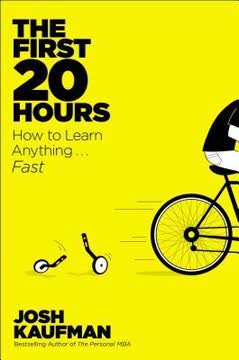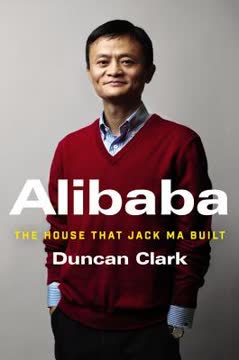Key Takeaways
1. Tap into the 95%: Market to the Subconscious Brain
Ninety-five percent of our thoughts, emotions, and learning occur without our conscious awareness, according to Harvard marketing professor and author Gerald Zaltman.
The subconscious rules. Our brains process vast amounts of information without our conscious awareness, influencing our decisions and behaviors. This has profound implications for marketers:
- Focus on emotional and nonverbal appeals rather than just rational arguments
- Use subtle cues and priming techniques to influence behavior
- Recognize that customers often can't articulate why they make choices
Effective marketing strategies tap into this subconscious processing by:
- Creating positive emotional associations with brands
- Using sensory cues like smell, touch, and sound
- Crafting messages that resonate on an instinctual level
- Employing visual and nonverbal communication
2. Harness the Power of Sensory Branding
All sensory experiences aren't positive. One third of the patrons thought that the restaurants smelled like stale oil. Of McDonald's customers in Britain, 42 percent thought the same, and both groups indicated that this smell diminished their enjoyment of the food.
Engage all five senses. Successful brands create cohesive, multi-sensory experiences that forge strong emotional connections with customers:
- Sight: Consistent visual branding across all touchpoints
- Sound: Distinctive audio logos and background music
- Smell: Signature scents that evoke positive emotions
- Touch: Textures and materials that reinforce brand identity
- Taste: Unique flavors associated with the brand
Sensory branding is particularly powerful because it bypasses conscious thought and creates lasting memories. For example:
- Singapore Airlines uses a consistent fragrance across multiple touchpoints
- Starbucks carefully controls the aroma in its stores
- Apple stores have a distinctive look, feel, and sound
3. Build Strong Emotional Connections with Your Brand
Brain scans show that strong brands lit up areas of the brain associated with positive emotions, rewards, and self-identification. The weak brands, meanwhile, lit up areas associated with memory (perhaps trying to figure out if they had ever seen it?) and negative emotions.
Emotions drive decisions. Strong brands create powerful emotional connections that influence consumer behavior on a subconscious level:
- Positive emotions associated with a brand lead to increased loyalty and sales
- Emotional connections can override rational decision-making
- Brand associations are often formed through repeated exposure and consistent messaging
Key strategies for building emotional brand connections:
- Tell compelling brand stories that resonate with your target audience
- Use imagery and language that evokes desired emotions
- Create a sense of belonging or identity around your brand
- Consistently deliver on your brand promise to reinforce positive associations
4. Leverage the Psychology of Print and Visual Media
Clearly, paper marketers can benefit from a more personal approach to describing the recipients of their largesse. Don't contribute to the symphony's general fund; sponsor a cellist named Marie.
Make it personal and tangible. Print and visual media have unique psychological impacts that can be leveraged for more effective marketing:
- Physical media creates a "deeper footprint" in the brain than digital
- Personalization increases emotional engagement and response rates
- Vivid imagery can create false memories of product experiences
Strategies for maximizing the impact of print and visual media:
- Use high-quality, tactile materials for important communications
- Incorporate personalized elements like names and relevant imagery
- Create vivid, sensory-rich descriptions and visuals
- Utilize the power of photographs to increase empathy and connection
5. Master the Art of Persuasive Copywriting
Take a lesson from the bard and shake up the way you use your words. Take a word that people know, and use it in an unexpected way. Neuro your copy!
Words have power. Effective copywriting taps into the way our brains process language to create more persuasive and memorable messages:
- Unexpected word usage grabs attention and increases engagement
- Simple fonts are more effective for calls to action
- Complex fonts can increase perceived effort and value for luxury items
- Vivid, sensory-rich language creates stronger mental impressions
Key copywriting techniques:
- Use storytelling to engage emotions and create memorable experiences
- Employ simple, powerful words like "FREE!" and "NEW!"
- Craft headlines and taglines that surprise or intrigue
- Choose adjectives that evoke sensory experiences and emotions
6. Understand and Exploit Consumer Decision-Making
Timing Is Critical in the want versus should battle. A decision on food for immediate consumption favored want items. Purchases for consumption days in the future were more likely to be healthy and nutritious (should items).
Decisions aren't always rational. Understanding the psychological factors that influence consumer choices allows marketers to craft more effective strategies:
- Timing affects the balance between immediate gratification and long-term benefits
- Framing and context significantly impact perceived value
- Cognitive biases like anchoring and loss aversion shape decision-making
Strategies for influencing consumer decisions:
- Time offers to align with "want" or "should" motivations
- Use pricing strategies that leverage psychological anchors
- Create a sense of scarcity or urgency to drive immediate action
- Frame choices to highlight desired options
7. Tailor Your Approach to Gender Differences
Male viewers are influenced by photos of attractive women, and their decisions skew toward the short-term and impulsive.
Gender impacts perception. Men and women process information and make decisions differently, requiring tailored marketing approaches:
- Men tend to process language in a more sensory, less abstract way
- Women are generally more responsive to emotional and relationship-based appeals
- Attractive female images can prime men for short-term thinking
Gender-specific marketing strategies:
- Use simpler, more direct language for male-targeted communications
- Incorporate relationship and community themes for female audiences
- Consider the potential impact of gender in spokesperson selection
- Be aware of how gender priming might affect purchasing decisions
8. Optimize the Shopping Experience
Clearly, marketers can't control what shoppers combine in their shopping carts, and once the item is in the cart, the consumer is almost certain to buy it anyway. It's also doubtful that this negative association is a long-lasting effect that would tarnish the brand or the consumer's long-term feelings about the product.
Details matter in retail. The shopping environment and experience significantly impact consumer behavior and perceptions:
- Product placement and proximity affect perceived value and appeal
- Touch increases feelings of ownership and willingness to purchase
- Cognitive dissonance can make difficult-to-obtain products more desirable
Strategies for optimizing the shopping experience:
- Carefully consider product placement and groupings
- Encourage customers to physically interact with products
- Create a sensory-rich environment that reinforces brand identity
- Strategically manage product availability to increase perceived value
9. Craft Compelling Video and TV Advertisements
Physical actions outweigh words in every element of your marketing campaign—print ads, commercials, and sales presentations—pay as much attention to the physical actions of the people as to what they are saying.
Nonverbal cues dominate. In video and TV advertising, visual elements and body language often have a stronger impact than spoken words:
- Gestures and facial expressions are processed simultaneously with speech
- Mismatches between verbal and nonverbal cues create cognitive dissonance
- Emotional appeals tend to be more effective than purely logical arguments
Best practices for video and TV advertising:
- Ensure consistency between verbal and nonverbal communication
- Use visuals and body language to reinforce key messages
- Lead with credibility-building elements before making strong claims
- Focus on creating emotional connections rather than just conveying information
Last updated:
FAQ
What's Brainfluence about?
- Consumer Behavior Insights: Brainfluence by Roger Dooley delves into how neuromarketing can be used to understand and influence consumer behavior by appealing to the subconscious mind.
- Neuromarketing Techniques: The book presents 100 actionable strategies based on neuroscience research that marketers can implement to improve their effectiveness.
- Emotional and Rational Decisions: It emphasizes the role of emotional triggers in marketing, noting that many consumer decisions are made subconsciously.
Why should I read Brainfluence?
- Smarter Marketing Techniques: Reading Brainfluence equips marketers with insights into how to market more effectively with fewer resources by understanding the brain's response to marketing stimuli.
- Research-Backed Strategies: The book is grounded in scientific research, providing credibility to the strategies presented, making it a valuable resource for marketers and business owners.
- Wide Applicability: The concepts are applicable across various industries, making it useful for anyone involved in marketing, sales, or customer engagement.
What are the key takeaways of Brainfluence?
- Subconscious Focus: A major takeaway is to "Stop Selling to 5 Percent of Your Customer’s Brain," emphasizing the need to appeal to the subconscious mind.
- Sensory Marketing Importance: Engaging all five senses in marketing is crucial for creating a memorable customer experience.
- Trust and Loyalty: Strategies for fostering customer loyalty and trust are highlighted, such as using counterfactual scenarios to enhance emotional connections.
What are the best quotes from Brainfluence and what do they mean?
- "Stop Selling to 5 Percent of Your Customer’s Brain": This quote underscores the importance of targeting the subconscious mind rather than relying solely on rational arguments in marketing.
- "Minimum Pain, Maximum Sales": This emphasizes the need to minimize the perceived pain of paying, suggesting that pricing strategies should be designed to reduce customer discomfort.
- "Use Scent to Be Memorable": This highlights the power of olfactory cues in branding, suggesting that unique scents can enhance brand recall and customer loyalty.
What is neuromarketing as defined in Brainfluence?
- Broad Definition: Neuromarketing is the application of neuroscience to marketing, using various techniques to understand consumer behavior.
- Tools and Techniques: It includes methods like fMRI and EEG to study brain responses to marketing stimuli, as well as behavioral research to inform marketing strategies.
- Goal of Neuromarketing: The ultimate aim is to leverage insights from neuroscience to create more effective marketing campaigns that resonate with consumers on a deeper level.
How does Brainfluence suggest using sensory marketing?
- Engage All Five Senses: The book advises marketers to appeal to sight, sound, smell, taste, and touch to create a holistic and memorable customer experience.
- Specific Examples: For instance, using pleasant scents in retail environments can enhance customer satisfaction and increase sales.
- Emotional Connections: Sensory marketing is shown to create stronger emotional connections with consumers, leading to improved brand loyalty.
What strategies does Brainfluence recommend for building customer loyalty?
- Counterfactual Scenarios: The book suggests using counterfactual thinking, where customers reflect on how their lives would be different without the product or service, to enhance feelings of loyalty.
- Loyalty Programs: Implementing effective loyalty programs that reward customers for repeat purchases can significantly increase retention rates.
- Quality Contact Time: Emphasizing the importance of spending quality time with customers to build trust and loyalty, as personal interactions can enhance customer satisfaction.
How can I apply the concept of "anchoring" from Brainfluence?
- Setting Initial Price Points: The book explains that initial price points can serve as anchors for consumer perceptions of value, influencing their willingness to pay.
- Creating Decoy Products: Introducing a less attractive option can make a desired product seem more appealing by comparison, leveraging the anchoring effect.
- Be Cautious with Anchors: Marketers should be careful about the anchors they set, as they can significantly impact consumer decision-making and perceived value.
What role does trust play in consumer behavior according to Brainfluence?
- Foundation of Loyalty: Trust is identified as a critical component of customer loyalty, with the book emphasizing that customers are more likely to remain loyal to brands they trust.
- Building Trust: Strategies such as demonstrating trustworthiness and using simple, reassuring language can enhance consumer trust.
- Oxytocin's Role: The book discusses how oxytocin, a hormone associated with bonding and trust, can be influenced by positive interactions, further solidifying customer relationships.
How does Brainfluence suggest using visuals in marketing?
- Power of Imagery: The book highlights that vivid images can create strong emotional responses and enhance memory retention, making them effective in advertising.
- Use of Faces: Including images of people, especially those looking towards the product or message, can direct consumer attention and increase engagement.
- Empathy Through Photos: Using relatable images, such as customer testimonials with photos, can foster empathy and connection, making marketing messages more impactful.
What is the concept of "implicit egotism" in Brainfluence?
- Self-Connection Influence: Implicit egotism refers to the tendency of individuals to prefer things associated with themselves, such as their names or initials.
- Marketing Applications: Marketers can leverage this concept by personalizing marketing messages or products to align with consumers' self-identities.
- Behavioral Insights: Understanding this subconscious preference can help marketers tailor their strategies to resonate more with consumers.
How does Brainfluence suggest using scarcity in marketing?
- Create Urgency: The book advises marketers to communicate scarcity effectively, such as stating “Only 3 left!” to prompt quick consumer action.
- Dynamic Scarcity Messaging: Using real-time inventory updates can enhance the credibility of scarcity claims.
- Combine with Other Strategies: Scarcity should be used alongside other marketing techniques, such as emotional appeals, to maximize its effectiveness.
Review Summary
Brainfluence receives mostly positive reviews for its practical insights into neuromarketing and consumer psychology. Readers appreciate the concise, actionable tips backed by scientific research. Many find it useful for understanding customer behavior and improving marketing strategies. Some criticize the lack of depth in certain areas and outdated examples. The book is praised for its easy-to-read format and real-world applications. Overall, it's recommended for marketers, business owners, and those interested in the psychology behind purchasing decisions.
Similar Books










Download PDF
Download EPUB
.epub digital book format is ideal for reading ebooks on phones, tablets, and e-readers.






